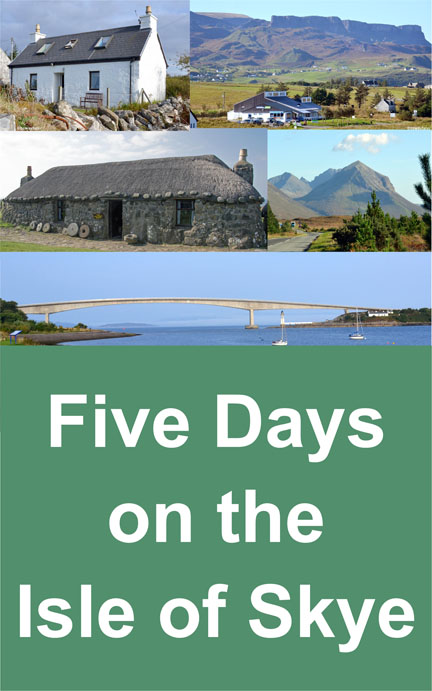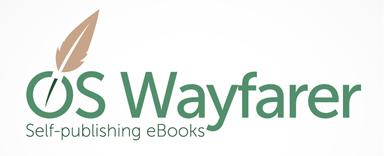Introduction
In this summary of our self-publishing approach we reflect on the series and provide a brief overview of our self-publishing process.
The preparation of this series of posts is the realisation of another long-term goal. With previous attempts we have tried to write a step-by-step guide to eBook self-publishing. However, we soon realised that all the information is already available, and our time could be spent more productively elsewhere. So, these posts have not been a step-by-step guide.
Nevertheless, we thought our system for eBook self-publishing was different because of our focus on independent travel, photography, and a more technical self-publishing approach.
There is no doubt, the task of writing these posts caused us to pause, reflect and discuss our self-publishing process. This can only bode well for the future.
This summary of our self-publishing approach also includes a list of resources we use to support our knowledge of self-publishing.
An Overview
A summary of our self-publishing approach:
- Use Google Search (or any research engine for that matter) and You Tube to find information; and use Evernote Premium (sharing feature) to store this information. Key articles are forwarded to our Kindles for reading at our leisure. (See Part 2: eBook Research and Planning)
- Develop and implement an eBook Marketing Plan. This is still a seemingly endless work-in-progress! (See Part 3: eBook Marketing)
- Prepare an outline of the ebook including a Table of Contents and draft sections based on research and planning. (See Part 4: eBook Content)
- Apply our research to plan, undertake and reflect on our holiday (in reality an eBook site visit). The challenge is to enjoy a holiday at the destination we have chosen, while collecting information and making observation for the planned eBook. (See Part 5: eBook Site Visit)
- Take our own travel photographs (with a DSLR, RAW format) and post-processing with Photoshop Elements for inclusion in our eBook. Travel photographs are important to us. However, prepare for some hard work to reach a good standard if you’re like me – not a natural photographer. (See Part 6: eBook Photographs and Cover)
- Use Microsoft Word to prepare our eBook to the final draft stage ready for our brains trust to assess and edit. Word is great for preparing a mock-up of the real thing. (See Part 7: Writing your eBook)
- Use SIGIL – The EPUB Editor to prepare two EPUBs: one for Smashwords, and the other to convert to MOBI for Amazon. SIGIL is a powerful program with a moderate learning curve, but there are good learning resources available. We point to alternatives approaches if you feel uncomfortable with the potential technical level of SIGIL. (See Part 8: Creating an ePUB)
- Submit our EPUB and MOBI files for publication on Smashwords and Amazon respectively. Amazon and Smashwords work well for us and allow us to focus on other activities. (See Part 9: Publish and Distribute your eBook)
- Review our eBook to consider a print version. We are not as familiar with the retail opportunities available with Blurb as we would like to be. However, we will continue to explore Blurb. (See Part 10: Self-publishing a print version)
- Review the process (after we recover!). A by-product of these posts is the framework it provides to review our future eBook endeavours. Our reviews will be more organised and less disorganised in the future. (See Part 11: Review of the Self-publishing Process)
Our eB ook – Five Days on the Isle of Skye can be found on:
ook – Five Days on the Isle of Skye can be found on:
Amazon (Kindle): The United States, United Kingdom, and Australia
Smashwords (EPUB), Smashwords also distributes to Oyster, Scribd, Yuzu, Blio and Inktera (formerly Page Foundry) and reaches OverDrive (world’s largest library ebook platform serving 20,000+ libraries), Baker & Taylor Axis 360, Gardners (Askews & Holts and Browns Books for Students), and Odilo (2,100 public libraries in North America, South America and Europe)
Resources
In this summary of our self-publishing approach, we list 10 essential resources which we have found to be essential in suppoting our self-publishing endeavours over the past 10 years:
- Kate Harper: How to Publish and Sell Your Article on the Kindle: 12 Tips for Short Documents (2017 update) – This ebook describes an approach using Microsoft Word. (Comment: This was the first book I read, and it provides a solution. I soon tired of the Word approach because of a lack of control and the Smashwords Meatgrinder. A couple of times I had to resort to what the Smashwords guide calls “the nuclear approach” – wiping all formatting and starting from scratch)
- Mark Coker: Smashwords Style Guide – This guide describes the Saswords approach to self-publishing on their platform. (Comment: It is a “must read” if you want to be successful in uploading a word document to Smashwords)
- Kate Harper: How to make an eBook Cover: For Non-Designers
- Fiverr: Logo and eBook cover design (Comment: Good value for money for eBook covers and logos. We had the OS Wayfarer logo made through Fiverr)
- SIGIL Home: https://www.mobileread.com/forums/showthread.php?t=210791 (Comment: If you want total control over your eBook formatting then a program like SIGIL is essential. You will need some understanding of HTML and CCS though)
- Stephen Outram (You Tube): Eight-part tutorial on SIGIL (Comment: Have a look at this to decide if SIGIL is for you. Very easy to follow). Don’t forget the SIGIL manual it is easy to read.
- Paul Salvette: The eBook Design and Development Guide (online resource at bbebooksthailand.com/publishing.html – (Comment: This eBook launched my efforts to take more control of our eBook self-publishing approach. It describes a rather onerous HTML approach. So, I’d treat it as a resource for HTML and CSS. When I have a problem to solve, I always refer to this source first. I have found it to be an excellent reference. It is becoming dated though).
- David Deley: Advanced Kindle Formatting: With Easy HTML (Comment: Another good reference for HTML programming for eBooks)
- Teo Kos: eBooks 101: A Beginner’s Guide to eBook Formatting (Comment: This author describes his approach to using SIGIL).
- Gurus: thecreativepenn.com (Joanna Penn); www.thebookdesigner.com (Joel Friedlander); www.justpublishingadvice.com (Derek Haines); www.problogger.com (Darren Rowse); www.digital-photography-school.com (Darren Rowse); www.citiesatdawn.com (Anthony Epes) (Comment: It is very import to find a few online “gurus” who blog about self-publishing, photography, blogging and any other area of interest to support you.
Wrap-up
I hear you ask: Do you think I can self-publish an eBook? Well the answer is a resounding Yes; and there are plenty of resources to guide you along the way. However, you need to provide the patience, determination, and commitment to work through the process. Oh, importantly you need to write the eBook.
Good luck!
Visits: 399









Leave A Comment